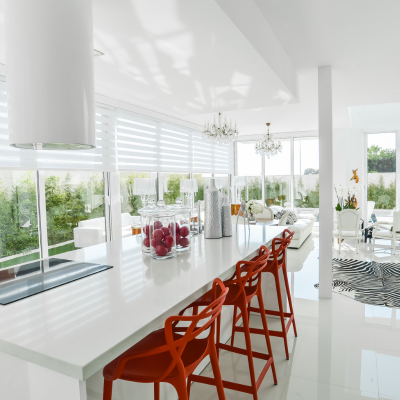In the Costa Blanca area we can say that we have hardly any winter, in the months when the cold starts the temperatures are warm most days. However, living near the sea, the characteristic humidity predominates when the sun disappears.
Among our recommendations for heating the house, we can find different ideas. Depending on the comfort you are looking for, cleanliness, avoiding odours or not having enough space to store firewood.
The main thing is to seek advice to see what type of fireplace can be installed in your home. However much we insist that we may like one model or another, we must take into account the installation, ventilation and other required needs.
Pellet fireplace
This is a very environmentally friendly option. The fireplace works with a component, the pellet, which is an ecological fuel, created from wood waste. It generates a lot of heat and leaves little waste. In terms of efficiency, pellets are considered to be more efficient than wood, and there are no CO2 emissions.

Wood-burning fireplace
Pay attention to the quality of the installation and especially the smoke extraction, especially in traditional wood-burning models. In a traditional open model, up to 70% of the heat produced escapes through the chimney along with the fumes and flue gases.
The efficiency of a fireplace can be increased by up to 60% if a closed model with a glass door is chosen, as it reaches a higher temperature.
Gas fireplace
It requires building work for its installation, but it is very functional. For its installation it is essential that it is connected to a gas supply, either butane or town gas. They are highly aesthetic, clean and can be designed on two sides, so they can be placed in open spaces. There are models that allow the smoke outlet to be avoided.
Bioethanol fireplace
As it does not produce smoke, it does not need any type of duct to the outside. Bioethanol fireplaces do not offer residual heat, their burner cools down as quickly as it heats up.
If you choose a gas or bioethanol model, although you will not be able to enjoy the crackling of the fire or its characteristic smell, you will not have to clean up ash or soot, because neither of these systems generates them.
As for maintenance, for all systems, except bioethanol systems, an annual check-up is advisable.
















